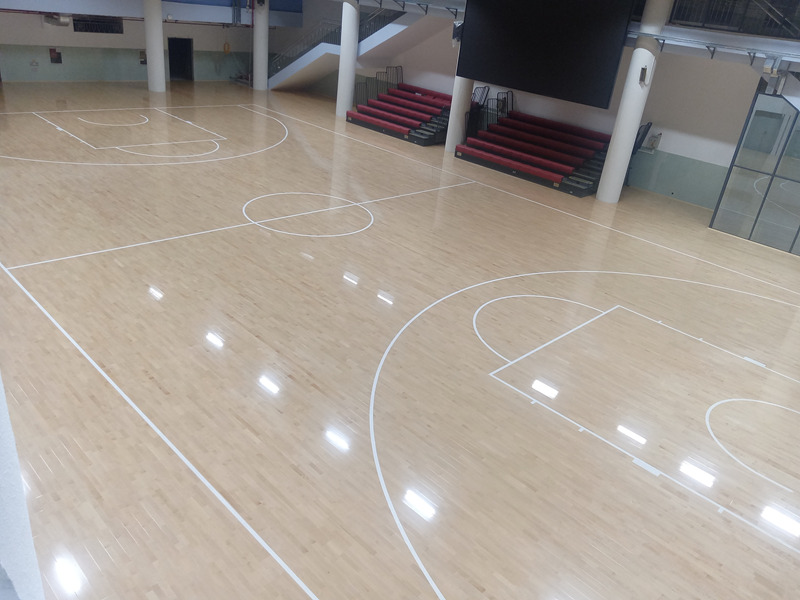The structural design of sports wooden floor directly affects its performance and use effect. This article will analyze the structural composition and performance characteristics of sports wooden floor in detail.

Structural composition:
Surface layer: hardwood material, providing a wear-resistant surface. These woods have high hardness and wear resistance and can withstand long-term high-intensity use. The thickness of the surface layer is usually between 2-3 mm.
Moisture-proof layer: prevent moisture penetration and protect the floor. The existence of the moisture-proof layer ensures the stability of the floor in a humid environment.
Bearing layer: multi-layer plywood, enhances stability and load-bearing capacity. The structural design of multi-layer plywood makes the floor have high stability and load-bearing capacity, and can withstand high-intensity use.
Elastic cushion: Provides cushioning and reduces sports impact. The elastic cushion is usually made of rubber or other elastic materials, laid under the floor, provides cushioning, absorbs the impact during exercise, and reduces the pressure on the athlete’s joints. The thickness of the elastic cushion is usually between 5-10 mm.
Performance characteristics:
Shock absorption performance: Protect athlete joints and reduce sports injuries. which can significantly reduce the risk of sports injuries.
Anti-slip performance: Increase friction and prevent slipping. This is especially important for sports that require quick response and frequent changes of direction, such as basketball and tennis.
Wear resistance: Extend the service life of the floor and reduce maintenance costs.
Summary:
Through its multi-layer structure design and excellent performance, sports wooden flooring provides athletes with a safe and comfortable sports environment.





